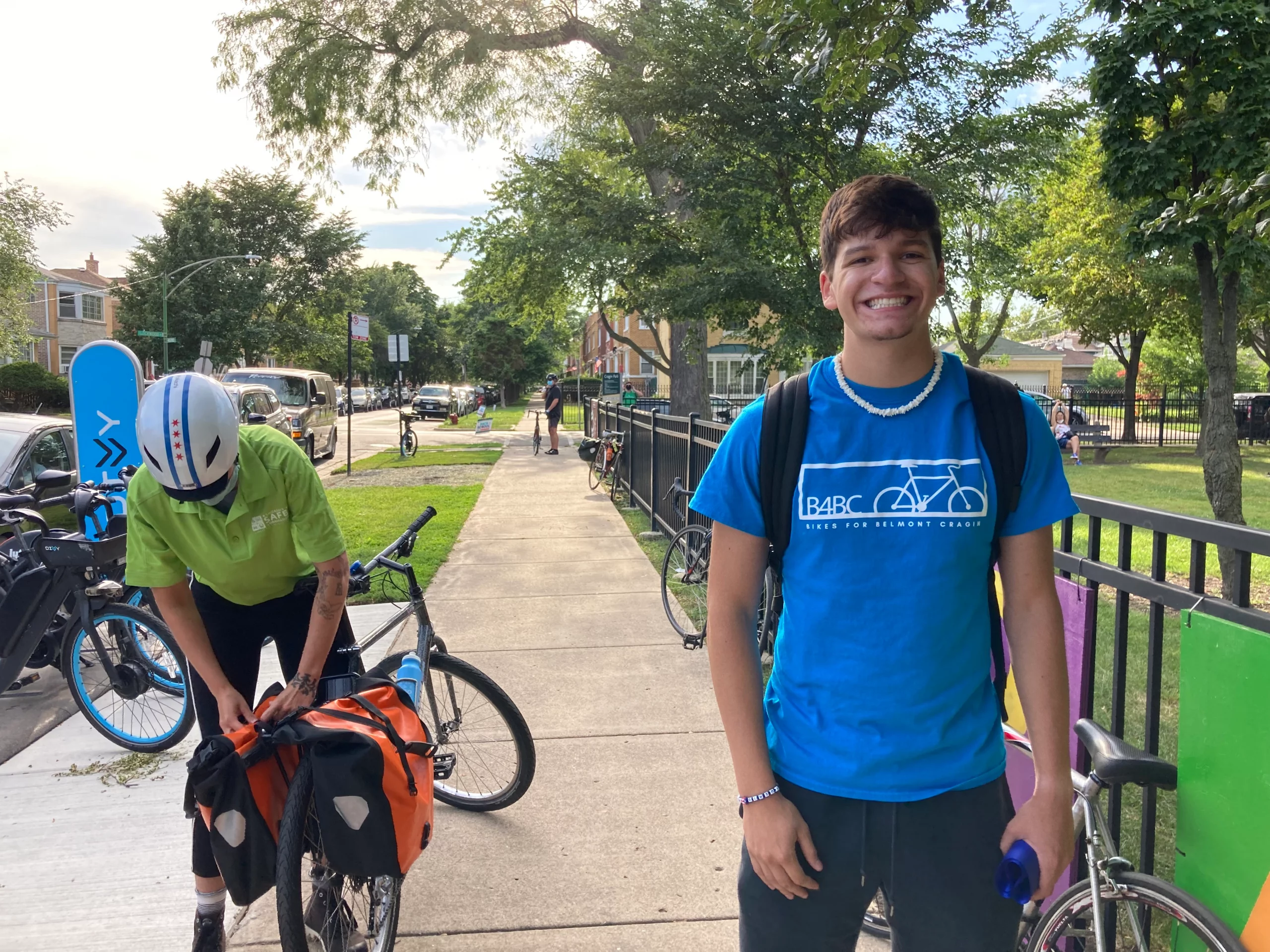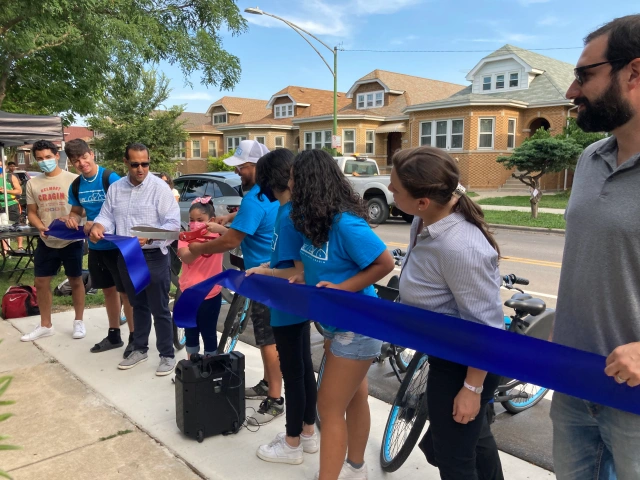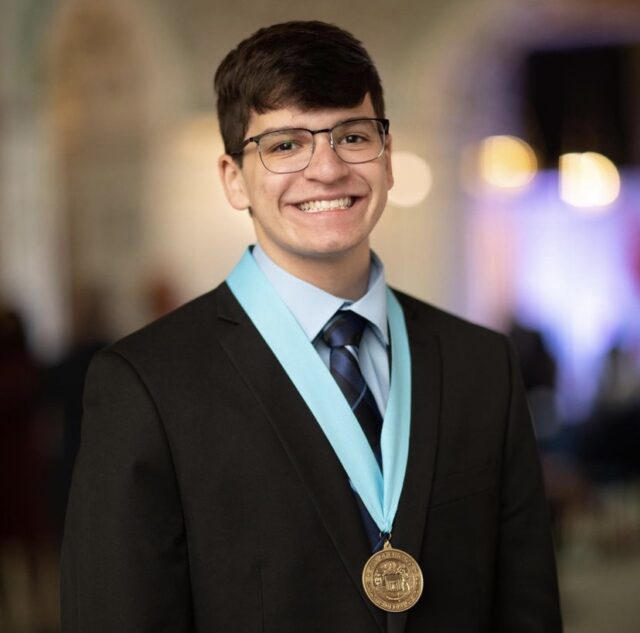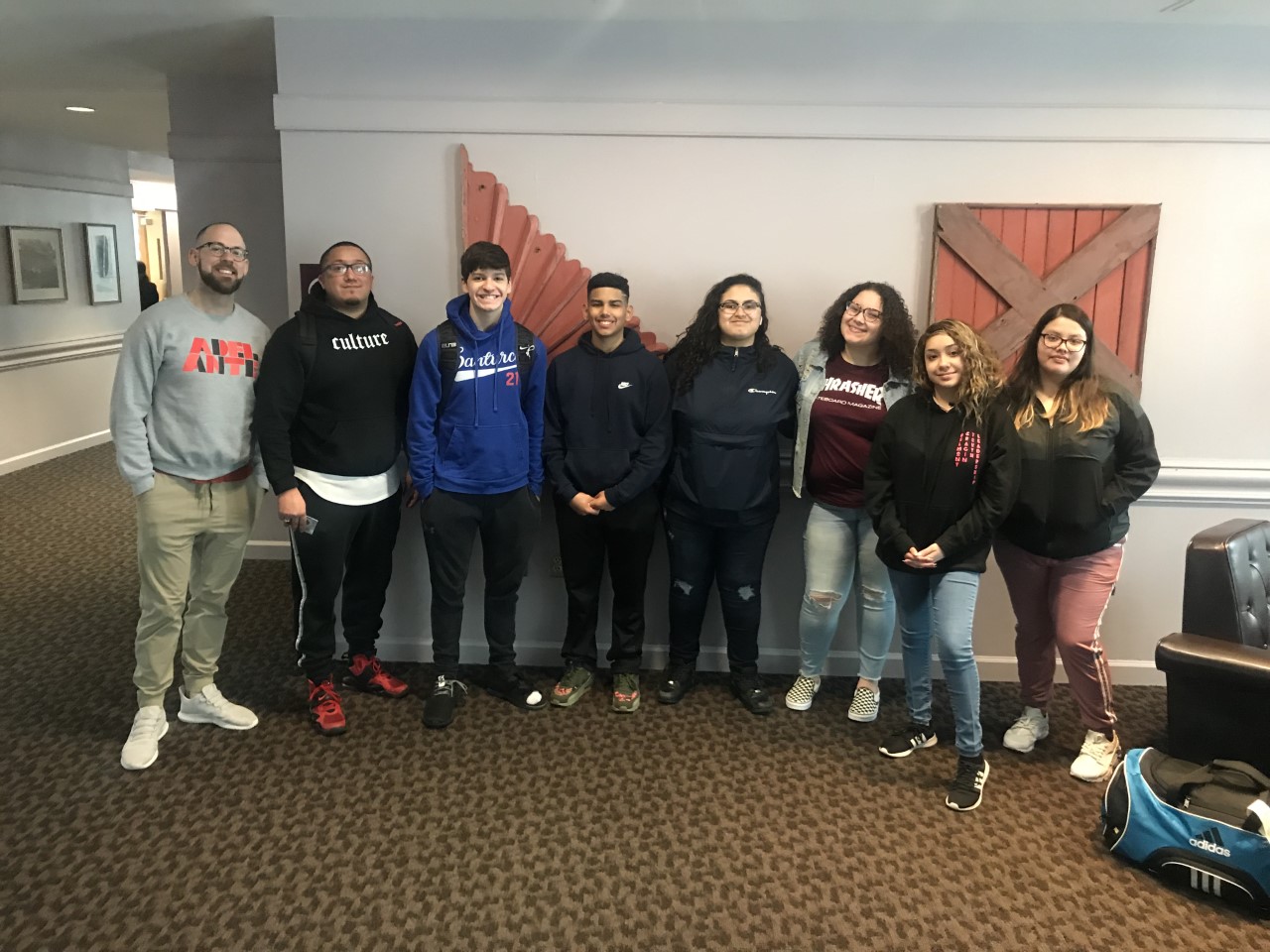Advocacy works: how a changemaker brought bike lanes to Belmont Cragin
A 2019 Changemakers Summit attendee, Zair Menjivar, explains how participating in the Summit taught him that while change takes time, he has the power to shape his community’s future.
By Beatriz Paniego-Béjar, Affiliate Communications Specialist, UnidosUS
It was March 2019 when Zair arrived in Washington, DC, for the first time to participate in the Changemakers Summit, and he had already been working with the youth of UnidosUS Affiliate Northwest Center on his passion project since 2018. The project? Make his Chicago neighborhood, Belmont Cragin, more bike-friendly for the youth and future generations living there.
“WHY NOT IN BELMONT CRAGIN?”
Belmont Cragin has the largest percentage of youth in the city of Chicago—23%, compared to the 17.1% of the city at large. That was Zair’s main motivation to embark on this four-year journey—he believed strongly that the young people of Belmont Cragin deserved a mode of transportation that worked for them, just as many other parts of the city already had: bike lanes, bike share stations, and bike parking spots.
“Up to 2021, there were absolutely no Divvy stations [bike share program in Chicago] or Divvy bikes in Belmont Cragin: the nearest one was literally about a mile and a half away, and that’s not walking distance at all,” Zair explains. “I went to school at a different part of the city, and in that part of the city you saw them everywhere […] and I thought: ‘Why can’t we have that in Belmont Cragin?’”
Bike lanes were also lacking in Belmont Cragin: “When you’re riding your bike, you want to feel safe, you want to have bike lanes, because a car accident can happen,” Zair continues. When he started this advocacy movement, there was only one mile of total bike lanes in his neighborhood, and there were 200 miles of bike lanes in total city-wide: that meant that “other neighborhoods in the city were obviously better served and had more safe bike passages.”
He was alarmed by this fact, especially given that at Belmont Cragin, “although it’s just one little neighborhood in the northwest side of the city,” Zair says, “we have the largest concentration of youth under the age of 18 in the city.” For him, it was a must for a neighborhood with almost 20,000 youth to have more bike lanes and successful bike share programs.
THE ENCOURAGEMENT HE NEEDED

Once Zair and other group of teenagers at Northwest Center identified the issue, it was time to act: “That motivated us to meet with our elected officials, with our aldermen, our state representatives also.” They were ready to raise awareness, to show the urgency of the matter.
At first there were many meetings, and their elected officials heard them and agreed about the importance of the topic, but “nothing came of it,” he explains. “That could’ve been a little discouraging; it wasn’t, but it could’ve been,” he shared. Then, “through Unidos[US], we went to DC, [and] met with Senator Durbin to present this issue to him,” Zair continues, and the feeling Zair felt after this meeting with Senator Durbin at Changemakers Summit in March 2019 was completely different to the ones he had previously.
“He was super excited,” Zair says. “He was telling us who to reach out to. […] He was very animated in the meeting. So, we came from city officials who [brushed us off], but Senator Durbin was like, ‘Yeah, you guys should do this, make sure you do this, reach out to this guy, and this department…’ He gave us all these suggestions and threw us very good information. That was very motivational.”
In sharing this story, you can hear Zair’s thrill in his voice. He was 15 years old when he met Senator Durbin: it was a big deal for him and the other youth to talk to their Senate representative, who was giving them the encouragement they needed to not give up.
“Senator Durbin was very passionate, he knew exactly what to do, where to go, who to speak to. That was very rejuvenating, very motivating,” Zair continues describing. He felt it: the senator supported them, liked the idea, “we are not doing this for nobody, he sees it. […] If I could attribute this whole program to something—what really started it, where did we take off—, I would say it was coming back from that meeting with Senator Durbin. […] That was a great, great experience.”
ENGAGING YOUTH AND BEYOND
The group came back from Washington, DC, and they were ready to go. They immediately started to organize in their community. “We hosted strategic bike rides: we would ride to certain parks, certain small businesses…just a quick one-hour bike ride. […] We would invite children, youth, parents all over the community…community residents, community business owners to take part of these bike rides.”
After the events, they run a survey: what had the riders noticed? What would they like to improve? Time after time, Zair and the group heard the same feedback, confirming what they were already sharing with their representatives: “They would say, ‘I feel safe because we are on a group, but if we were not, I wouldn’t bike’ […] or ‘I enjoy biking, but I’m not going to risk myself because there’s no bike lanes,’” says Zair: “That only motivated us further.”
It was now time to take it to the city, the bike share program, and the Chicago Department of Transportation (CDOT).
THIS IS WHAT THE COMMUNITY WANTS
Now that they brought feedback from the community at large, ranging from children to parents and grandparents, from high schoolers to business owners, the city and its departments heard them.
“It was a four-year uphill battle. We started in 2018 and we just barely finished a few months ago,” Zair shares. “It went from a group of youth who are passionate to engage residents, elected officials, city departments…and overtime we were able to plan. Now we have an intricate bike share program,” which are placed in strategic locations, like high schools, parks, the bus station, and local businesses, “and we all had input on that.”

Last summer, at the ribbon cutting event at a park in Belmont Cragin where city officials, CDOT, and Divvy representatives spoke about the importance of this milestone, Zair felt the satisfaction of having accomplished his passion project: “That was our big celebration. That was our culmination,” he says. But one of the biggest moments that stayed with him was something very powerful that happened: “There was a little girl who was swinging on the swings—her mom was there—having a good time. And instead of having our elected official cut the ribbon or instead of having a city department official or any resident, we had her, this little girl who was maybe 8, 10 years old: we had her cut the ribbon,” Zair tells.
This symbolism was what they needed for this moment because this symbolized how the next generation will be able to utilize these new bike lanes and bike sharing program as they grow up: “We had her cut the ribbon to symbolize that this is not just for me, but it’s more important for the next generation of youth. […] It’s not for us, it’s for them,” he continues.
CHANGE IS POSSIBLE
It was a long fight, one with which Zair developed leadership skills, and showed his passion for his neighborhood and future generations. Through their battle, Zair and Northwest Center’s youth were able to:
- Get 20-25 bike share stations
- Build 5-6 miles of bike lanes, with more to come this spring and summer
HEAR FROM ZAIR
“My name is Zair Menjivar. I’m born and raised in the Belmont Cragin neighborhood of Chicago, on the Northwest side. I’ve lived here for the majority of my life. […] This is my community. I’m very passionate about that. I’ve been involved with community organizing through Northwest Center for about four years now.
“I grew up in this neighborhood, so I was very inspired and very passionate about certain things that I wanted to see in my neighborhood, that’s why I got involved with Northwest Center. Through that I was able to have an opportunity to work for the city of Chicago, under one of the 50 aldermen: I work for Alderman Felix Cardona Jr. in the 31st ward, so also in the Belmont Cragin and northwest side of Chicago.

“As I said, I’m very passionate about my community. I didn’t go to school here—I went to school in other parts of the city—and that only fueled my motivation for my community because I would see things in other neighborhoods that I would say, ‘Why not in Belmont Cragin? Why can’t I have that in my neighborhood? How come I have to go this far for this?’
“I am just someone very passionate about my community and I love to make change, not only for me but for the next generation of children who in the next few years will become high schoolers and become youth and can also take advantage of the opportunities this neighborhood has.”
Zair is now in college studying political science. He doesn’t know yet if he will ever run for office; what he does know is that he wants to have an impact on his community, and as he expressed, that meeting with Senator Durbin made him realize the impact of our elected officials. His words of wisdom for our future leaders: “If someone would have told you: ‘Oh, you’re just a kid, just a sophomore, just a high schooler,’ that’s an absolute lie. You’re not ‘just’ anything. If you are passionate about something, if you want to bring change in your community, in your city, in your school, you’re more, more than capable of bringing about that change. Don’t let anyone or anything discourage you.”
Stay tuned to our upcoming Changemakers Summit on March 28 through the 30, and follow the hashtag #Changemakers22 in our social channels (@WeAreUnidosUS) to see our future changemakers in action.

